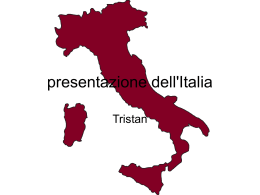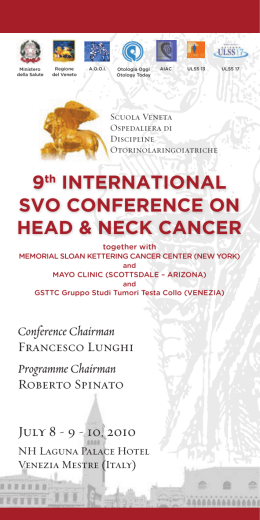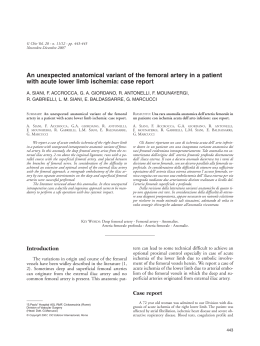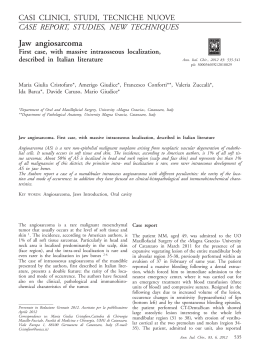Instabilità delle protesi d’anca: Patogenesi, clinica , diagnostica A.Palermo Clinica San Gaudenzio NOVARA Casa di cura Villa Montallegro GENOVA Clinica Villa Ragionieri FIRENZE Il carico fisiologico sulla testa femorale è determinato dalla risultante R delle forze che agiscono sull’ estremità prossimale del femore in appoggio monopodale. Il peso del corpo meno quello dell’ arto sotto carico K agisce medialmente all’ articolazione. K è bilanciato dalla forza M degli abduttori. Il braccio di leva OC della forza K è >3 volte di quello OB della forza M Biomeccanica dell’ anca normale e patologica: fondamenti teorici, tecniche e risultati del trattamento. Friedrich Pauwels “Placement of the center of the acetabulum as far medially, inferiorly, and anteriorly as is anatomically possible is of prime importance in reducing the loads at the hip.” Increased rates of loosening of both the femoral and the acetabular component have been associated with an initial position of the acetabular cup outside of the true acetabular region. Johnston, R. C.; Brand, R. A.; and Crowninshield, R. D.: Reconstruction of the hip. A mathematical approach to determine optimum geometric relationships. J. Bone and Joint Surg. July 1979; 61-A:639-652. “a higher incidence of loosening of the femoral component when the centre of rotation was placed 30 mm superior and lateral to the normal position” Yoder SA, Brand RA, Pedersen DR, O'Gorman TW. Total hip acetabular component position affects component loosening rates. Clin Orthop 1988; 228:79-87. “inferior displacement of 20 mm maximised the isometric abductor moment, whereas superior displacement of 20 mm decreased it” Delp SL, Maloney W. Effects of hip center location on the moment -generating capacity of the muscles. J Biomech 1993; 26:485-99. “placing the centre of rotation 15 mm superior to the normal position increased the rate of revision of both the cup (p < 0.01) and the femoral component (p < 0.04)” Pagnano MW, Hanssen AD, Lewallen DG, Shaughnessy WJ. The effect of superior placement of the acetabular component on the rate of loosening after total hip arthroplasty. J Bone Joint Surg [Am] 1996; 78-A:1004-14. “placing the centre of rotation within 10 mm of the normal position, or even more medially, was associated with less loosening of the socket (p = 0.016). Superior or lateral displacement greater than 10 mm increased the incidence of loosening of the socket” Stans AA, Pagnano MW, Shaughnessy WJ, Hanssen AD. Results of total hip arthroplasty for Crowe type III developmental dysplasia. Clin Orthop 1998; 348:149-57. RISPETTO DEI TESSUTI RISPETTO DEL PATRIMONIO OSSEO RIPRISTINO DELLA BIOMECCANICA ARTICOLARE APPROCCIO CHIRURGICO RICOSTRUZIONE ANATOMICA TSS F.Pipino DOPPIO ACCESSO ANTEROLATERALE ANTERIORE POSTERIORE LATERALE DIRETTA POSTEROLATERALE LA SCUOLA Ricostruzione Anatomica •Antiversione •Lunghezza Arto •Off-set •Grandi teste (ROM,…) 11 INSTABILITA’-LUSSAZIONE CAUSE IMPINGEMENT PROTESI-PROTESI IMPINGEMENT OSSO-OSSO INSTABILITA’ PURA Il design incide sul rischio di lussazione • • • • • • Diametro della testa Morfologia del collo protesico Offset Altezza dell’osteotomia del collo Angolo cervico diafisario Profondità del cotile e geometria del bordo IN VITRO ROM TEST ROM GONIOMETRIC EVALUATION HEAD from 28 to 44 W.J. MALONEY, CCJR, ORLANDO 2002 CNECK FEMORAL ANTEVERSION 0 ° 15 ° STEM ON BONE IMPINGEMENT !!! 30° RE @ 0° FL 102 16 63 0 104 18 64 +3,5 106 18 64 +7 99 9 51 +10 99 9 53 FLEXION RI @ 90° FL RE @ 0° FL -3,5 116 38 34 0 121 43 35 +3,5 124 45 38 +7 118 39 25 +10 117 39 24 NECK BONE ON BONE RI @ 90° FL -3,5 NECK HEAD 28mm FLEXION FLEXION RI @ 90° FL RE @ 0° FL -3,5 111 31 43 0 115 34 45 +3,5 117 36 48 +7 112 26 35 +10 113 25 35 FEMORAL ANTEVERSION 0 ° NECK F LEXION -8 103 19 -4 105 22 70 0 107 24 71 +4 110 26 73 +8 112 28 74 NECK HEAD 38mm 15 ° STEM ON BONE IMPINGEMENT !!! 30° RI @ 90° FL FL RE @ 0° 69 RE @ 0° FL -8 115 35 50 -4 119 41 48 0 124 47 47 +4 125 48 48 +8 127 51 49 FLEXION RI @ 90° FL RE @ 0° FL NECK BONE ON BONE FLEXION RI @ 90° FL -8 110 29 57 -4 116 35 57 0 118 38 57 +4 120 41 56 +8 123 42 58 Restoring Normal Hip Motion Implant Design Factors Philip C Noble The Institute of Orthopedic Research and Education, and Baylor College of Medicine, Houston, TX Normal Hip Motion 120 Posterior dislocation (flexion) 100 ROM (degrees) 80 60 40 20 0 Anterior dislocation (external rotation) Results –Flexion Activities 130 Range of Motion (degrees) Intact 120 THR HR 110 100 90 80 70 Flexion Sit to Stand Shoe Tying Cross Legs Core Study Group: Avg Intact Anteversion: 8.1° Results –Extension Activities Range of Motion (degrees) 60 Intact THR HR 50 40 30 20 10 0 Extension Pivot Roll Core Study Group: Avg Intact Anteversion: 8.1° Functional limits: • extension to 30° • pivot to 20° ER • roll to 20° ER Change in Flexion with Head Size 115 Flexion (deg) 110 28mm head 38mm head 105 100 95 90 p<0.0001 p<0.0001 85 Impingement Dislocation Effect of Neck Diameter on ROM 160 Neck Diameter ROM (deg) 150 12mm 140 11mm 10mm 9mm 130 120 110 28mm 36mm Head Size (mm) 42mm QUALE FUTURO PER I GRANDI DIAMETRI ? Head Size and ROM at Dislocation Increase in Flexion (Deg) 14 10° Adduction 20° Adduction 30° Adduction 12 10 8 6 4 2 0 22-26 22-28 22-32 Change in Head Size [mm] 28-32 Head Size vs. Mechanism of Dislocation 60 Frequency (%) Impingement Prosthetic Bony 40 20 0 22mm 26mm 28mm Femoral Head Size 32mm Lo dira’ il Tempo The Cross-Sectional Morphology of the Femoral Neck Sup Post Cross-sections through the normal neck Ant Inf Alternative Philosophies of Neck Design Cylindrical AP Flats Asymmetric Modeling Impingement Cross section through neck Sit to Stand Roll Impingement locations Sit to stand anterior Stoop Tie shoes Leg Cross Pure flexion lateral medial Leg cross posterior Roll over Stoop GRANDE IMPORTANZA ALL’ORIENTAMENTO DEL COTILE VERTICALITA’ CONCLUDENDO CLASSIFICAZIONE INSTABILITA’ PTA 1° MAL MOVIMENTO (senza anomalie radiografiche da malposizionamento) 2° MALPOSIZIONAMENTO (cotile o stelo) 3° NON BILANCIAMENTO TESSUTI MOLLI 4° MALPOSIZIONAMENTO E NON BILANCIAMENTO TESSUTI MOLLI TRATTAMENTO 1° SUCCESSO DOPO RIDUZIONE INCRUENTA 2° REINTERVENTO 3° REINTERVENTO dopo LUSSAZIONI RECIDIVANTI 4° PIU’ REVISIONI LAWRENCE DORR L’INSTABILITA’ PUO ESSERE TRATTATA CON SUCCESSO ANCHE CON LA RIDUZIONE INCRUENTA COME PRIMA SCELTA MA IN CASI DI ACCERTATA INSTABILITA’ DEI TESSUTI MOLLI O DI MALPOSIZIONAMENTO DELLE COMPONENTI E’ NECESSARIA LA STRATEGIA CHIRURGICA !!! A.Palermo G.Calafiore M.Rossoni R.Simonetta A.Ascia S.Cannizzaro www.infogoa.it
Scarica



